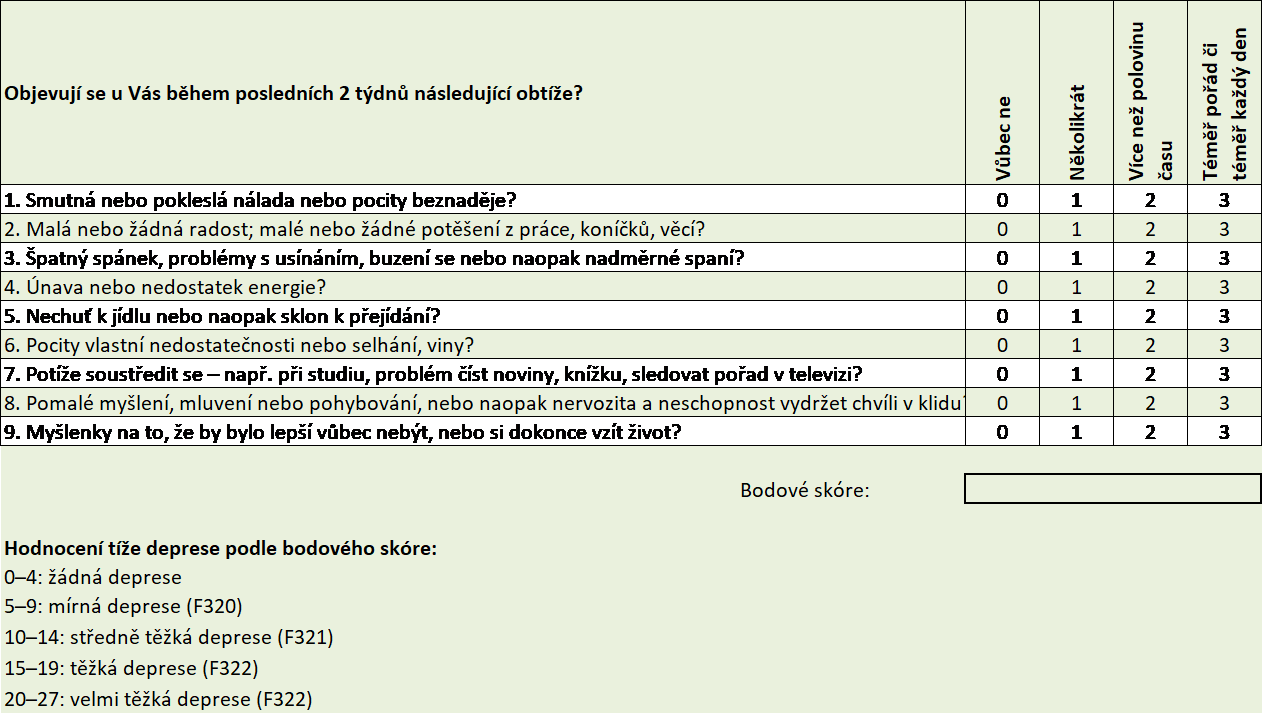Rapid Diagnosis of Depression in Primary Care Settings
Depression is one of the most commonly occurring psychiatric disorders encountered in general practitioners' offices. The general public also very often uses the term “depression” to mean “bad mood.” Thus, a rapid diagnostic tool to identify “real depression” certainly deserves our attention.
Depression in General
Depression can be defined as a severe, long-term psychological disorder characterized by a decrease or complete disappearance of the ability to experience pleasure, low moods, and pathological sadness. Lifetime prevalence of depression in women is reported to be up to 20% (about half that in men) and is very often associated with somatic diseases, especially chronic ones (e.g., oncological, rheumatological, neurological, or cardiovascular). It is essential to actively screen for depression even with very abstract hints from our patients—particularly with the aforementioned chronic diseases. How can we do this in the (time-constrained) conditions of primary care?
Depression Screening in 15 Seconds
In suspected cases of depression, we can use 2 screening questions that practically won't delay us:
- Have you been troubled (bothered, burdened) by a sad or down mood or feelings of hopelessness in the past month?
- Have you been troubled (bothered, burdened) by little interest or pleasure in work and other activities in the past month?
If the answer is positive to at least one of these two screening questions, it is advisable to consider confirmation using the validated PHQ-9 diagnostic questionnaire.

Somatic Syndrome in Depression
Depression can manifest not only as psychological symptoms but also very often as so-called somatic symptoms. Somatic syndrome is defined by the presence of at least 4 of the symptoms listed below:
- Loss of interest or pleasure in activities usually enjoyed;
- Early morning awakening, 2 or more hours before usual time;
- Depression worse in the morning;
- Objective evidence of psychomotor retardation or agitation (as reported by others);
- Obvious loss of appetite;
- Noticeable weight loss (≥ 5% in the last month);
- Noticeable decreased libido.
The Patient Has Depression—What Next?
If a patient is sitting before us with depression, a comprehensive assessment of risk factors needs to be conducted, considering not only the sum of symptoms but also:
- Duration of issues;
- Whether it is the first or a repeated episode;
- Severity of symptoms;
- Degree of functional impairment and/or disability related to potential depression;
- Presence of somatic syndrome;
- Presence of psychotic symptoms;
- Occurrence of previous episodes of mania or hypomania;
- Risk of suicide;
- Availability of social support;
- Patient and family history with regard to mood disorders, psychosis, suicides, or suicide attempts.
After assessing the severity of depression and risk factors, with the most important being the evaluation of suicide risk, we either initiate treatment at the primary care level or refer directly to a specialist.
(zem)
Source: Raboch J., Červený R. Depression. Recommended Diagnostic and Therapeutic Procedures for General Practitioners. Center for Recommended Procedures for General Practitioners, Society of General Medicine CLS JEP, Prague, 2018.
Did you like this article? Would you like to comment on it? Write to us. We are interested in your opinion. We will not publish it, but we will gladly answer you.
